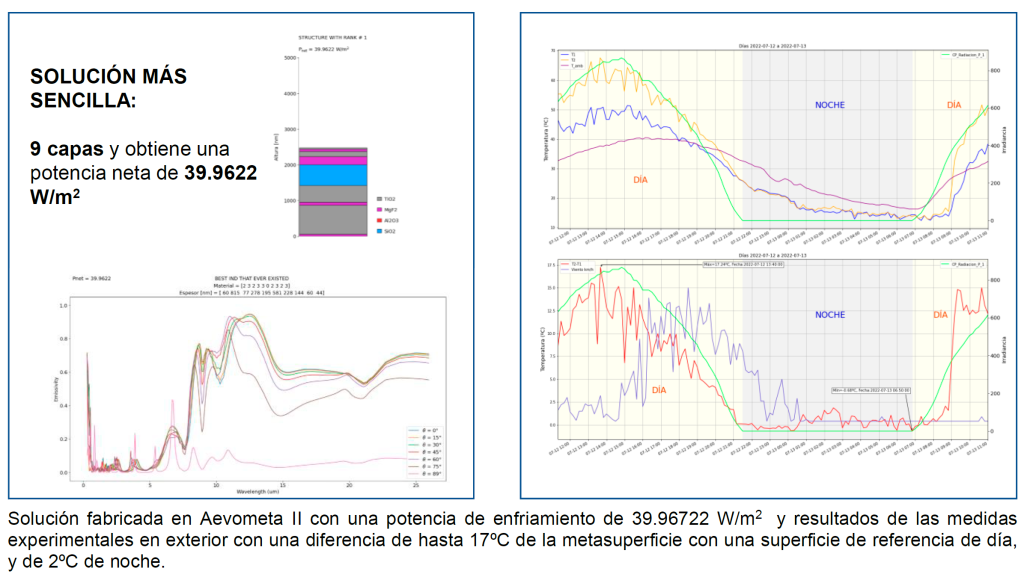AEVOMETA II
EVOlutionary algorithms and deep learning for designing ultra-compact passive radiative cooling devices based on nanophotonic metasurfaces
Links:
EVOlutionary algorithms and deep learning for designing ultra-compact passive radiative cooling devices based on nanophotonic metasurfaces
Links:
Comunicaciones en congresos
The goal of AEVOMETA II is to design metamaterials (artificial materials with properties that do not exist in nature) that have passive radiative cooling, which means when they are used on the surface of an object, e.g. the facade and roof of a building, they can cool it without using electricity. Radiative cooling requires a precise adjustment of the optical properties of the metamaterial in the entire electromagnetic spectrum, from UV to mid-infrared (0.3-50 μm) for it to have the behaviour sought after. To achieve that goal, in this collaborative project we combined two scientific disciplines: nanophotonics (UPNA) and artificial intelligence (AIN).
This kind of cooling is considered an energy efficiency technique and a sustainable alternative to using air conditioning systems. Most climate-control systems use energy, which can account for 50% of the total energy consumed by a building. In that context, an ideal cooling device would be one that could cool a building without consuming external energy in a purely passive operation.
Work was started in 2019, and the concept test (TRL-2) was done in this first project, which means we tested whether the goal and techniques to be developed worked. Nevertheless, the research was centred on a family of metasurfaces in a pyramid shape that would most likely never be manufactured.
For that reason, AEVOMETA II reoriented itself to designing the multi-layer thin-film structures that could be manufactured and used in real applications. But the problem with optimising passive radiative cooling structures is that it is hyperdimensional, with multiple variables and goals that are interrelated in a non-trivial way and, consequently, it is hard to attack using human intuition. Given the high number of parameters that create millions of possible combinations and where calculating a single solution is computationally costly, it is impossible to attack the search for an optimal solution by calculating all the possible combinations. Thus, by applying evolutionary computation techniques, it was possible to find the best solutions by calculating only a small fraction of all the possible ones.
Because in this phase of searching for the optimal solution a lot of solutions were generated, deep learning techniques were used to tackle the metasurface design. After a training phase, it is possible to predict the response of an arbitrary metasurface, and even attack the inverse problem: given an arbitrary response the metasurface that implements it can be obtained.
The greatest advantage of deep learning based algorithms is that they are able to search for dependencies autonomously, without needing to tell them explicitly where to look for them. That means it is not necessary to tell them what the key characteristics are that they need to look at when searching for dependencies, in contrast to machine learning algorithms. It is sufficient to give them all the raw data and, by themselves, they can automatically detect what the most relevant characteristics are. That is a great advantage, because they can see characteristics that are hidden in the data that a human being could neither detect nor imagine.
In culmination of AEVOMETA II, a small scale prototype has been fabricated and characterised that has been operating under environmental conditions, ratifying all the results obtained in theory.
